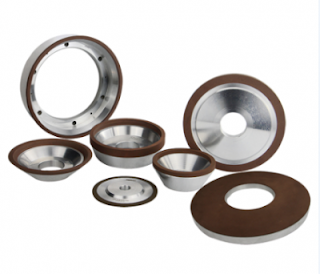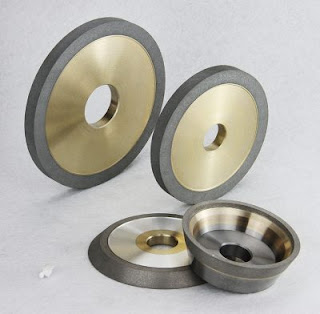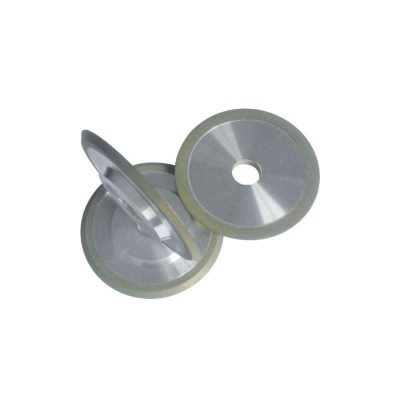Study on Ferrite Ceramics Ground by Resin Bond Diamond Wheel
 Ceramic materials have many excellent properties such as high hardness, high wear resistance, corrosion resistance, heat resistance, heat insulation, low density and low expansion coefficient, and strong chemical inertness. They are widely used in precision bearings. Automotive components, biomimetic compatible implants, sealing components, refractory materials, cutting tools and electronics. However, due to the low plasticity of the ceramic material, if the processing method is improper, it is easy to cause brittle failure and microcracks, making the processing of the ceramic material very difficult. Therefore, researchers at home and abroad have studied the processing mechanism and processing technology of ceramic hard and brittle materials. It is believed that although the resin bond diamond wheel has higher price and lower grinding efficiency, the application of superabrasive abrasive for direct contact removal processing as the representative grinding technology is still one of the effective ways to process ceramic materials.
Ceramic materials have many excellent properties such as high hardness, high wear resistance, corrosion resistance, heat resistance, heat insulation, low density and low expansion coefficient, and strong chemical inertness. They are widely used in precision bearings. Automotive components, biomimetic compatible implants, sealing components, refractory materials, cutting tools and electronics. However, due to the low plasticity of the ceramic material, if the processing method is improper, it is easy to cause brittle failure and microcracks, making the processing of the ceramic material very difficult. Therefore, researchers at home and abroad have studied the processing mechanism and processing technology of ceramic hard and brittle materials. It is believed that although the resin bond diamond wheel has higher price and lower grinding efficiency, the application of superabrasive abrasive for direct contact removal processing as the representative grinding technology is still one of the effective ways to process ceramic materials.
The removal of engineering ceramic materials is accomplished by the accumulation of all microscopic fractures generated by the abrasive particles at the moment of processing. When the stress field formed by the cutting edge contacting the workpiece is smaller than the defect size, the material is mainly removed by plastic deformation. When the stress field is larger than the defect size, the brittle microcrack will be broken. The compressive stress and frictional heat generated by the abrasive grain cutting into the workpiece will causes a local plastic flow of the material under the abrasive particles to form a deformed layer on the machined surface. At the same time, since the load acting on the abrasive particles exceeds the critical load at which the crack is generated, a central crack and a lateral crack are generated on the machined surface. Lateral cracks sometimes will extend to the free surface, making a portion of the material removed, but most of the material is crushed by the abrasive rake face. The grinding process of the ceramic material can be divided into three stages, namely elastic sliding, flow deformation and brittle fracture. The properties of ceramic workpiece materials such as strength, hardness and fracture toughness are obviously the main factors controlling the brittle fracture and plastic deformation during the material removal. The grinding depth, grinding wheel and its conditioning conditions, machine tool stiffness and other factors also affect the material removal mechanism during ceramic components grinding and cutting process.
Different grinding conditions have great influence on the surface roughness of the workpiece, because the grinding zone temperature is high when the ceramic workpiece is ground with a resin bond diamond wheel. The coolant can improve the quality of the ground surface, especially when large particle abrasive wheels are used. Grinding fluid has great influence on the ceramic grinding process. In order to obtain good surface quality, the ceramic grinding process must be carried out under the condition of grinding fluid.
In addition, if the hardness of the resin bond diamond wheel is too high, the abrasive grains cannot be detached in time after being passivated, and the increase of the plastic deformation by the grinding continues to increase the surface roughness. When the grinding wheel is too soft, the working surface of the grinding wheel will be deformed during the grinding process, and uneven wear will also increase the roughness of the grinding surface. Therefore, in order to obtain good grinding surface roughness, the selection of the grinding wheel is very important, and good dressing effect of the grinding wheel also directly affects the roughness value of the grinding surface.



www.glorydiamondtools.com
回复删除